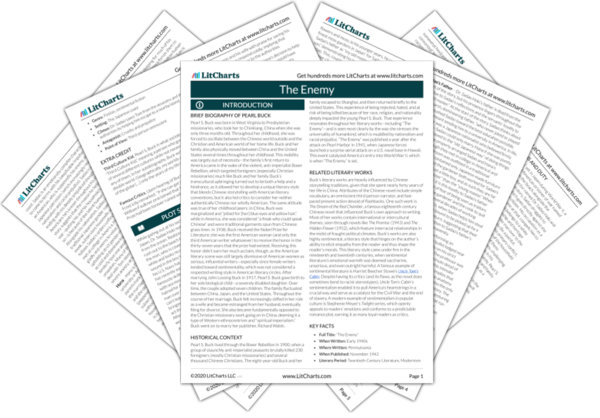Sadao is most critical of his landlady in America, who was the only landlord willing to take on a Japanese tenant (though Sadao implies that she did have some initial hesitations). Sadao depicts the landlady as being generally kind, if somewhat unrefined, which makes her seem undeserving of his harsh and antagonistic words. It seems that Sadao hasn’t been changed profoundly. He thinks about Tom’s “white and repulsive” face and seems genuinely puzzled as to why he let Tom live. The story resists a clean ending, suggesting instead that Sadao is a deeply nuanced, human character with the capacity for both cruelty and kindness. Though he has returned to his prejudiced mindset, his actions over the course of the story give readers hope that he will turn toward kindness again.


